Subtotal: £50.32
5 X Hawaii Variegated Platies – Xiphophorus Variatus – Livebearer, Stunning Tropical Fish Perfect for Beginners, Enhance Your Freshwater Aquarium with Beautiful Colors, Easy Care for New Aquarists
£15.99 Original price was: £15.99.£13.55Current price is: £13.55.
Welcome these beautiful 5 Hawaii Variegated Platies into your aquarium. Their stunning colors and graceful movements make them ideal for community tanks. These peaceful livebearers are perfect for beginners, enhancing your freshwater environment with vibrant hues and lively interactions.
999 in stock
Species Introduction
The Hawaii Variegated Platies, scientifically known as Xiphophorus maculatus, are a captivating species within the Poeciliidae family. Originating from the warm, freshwater streams and ponds of Central America, these vibrant tropical fish are a testament to nature’s artistry. Their stunning coloration, which can range from bright oranges and yellows to deep blues and greens, makes them a popular choice for aquarists looking to enhance their freshwater aquarium. As livebearers, they give birth to free-swimming fry, making them a fascinating addition to community tanks. Their peaceful nature and adaptability to various water conditions make them an ideal choice for both novice and experienced aquarists alike.
Care Requirements Dashboard
Essential Care Guide for Your Hawaii Variegated Platies
| Optimal Living Conditions | |
|---|---|
| Water Temperature | 24-27°C (75-81°F) |
| pH Level | 6.5-7.5 |
| Water Hardness | 4-12 dKH |
| Minimum Tank Size | 80L (20 gal) |
| Salinity | Freshwater |
| Care Level | Beginner Friendly |
✓ Care Level: Easy
Natural Behavior & Temperament
Hawaii Variegated Platies are known for their friendly and peaceful demeanor, making them excellent community fish. They thrive in groups and exhibit a variety of social behaviors, such as schooling and playful interactions. In a well-planted aquarium, they will often explore their surroundings, darting in and out of foliage and decorations. Their natural swimming patterns are a joy to observe, as they gracefully glide through the water, showcasing their vibrant colors. Additionally, these fish are relatively adaptable and can thrive in a range of water conditions, which contributes to their popularity among aquarists. However, it is essential to ensure that they are not housed with overly aggressive species, as their gentle nature makes them vulnerable to bullying.
Tank Setup Guide
Creating an ideal environment for your Hawaii Variegated Platies involves careful consideration of tank setup. These fish thrive in a well-planted aquarium that mimics their natural habitat. Use a substrate that allows for the growth of live plants, such as fine gravel or sand. Incorporating a variety of aquatic plants not only provides hiding spots but also enhances the aesthetic appeal of the tank. Floating plants can help diffuse light and create a more natural environment. Additionally, include decorations such as rocks and driftwood to create territories and provide shelter. Ensure that the tank has adequate filtration to maintain water quality, and consider using a heater to keep the water temperature stable, as fluctuations can stress these delicate fish.
Water Quality Management
✓ Good Water Quality is Essential
Maintaining optimal water quality is crucial for the health and well-being of your Hawaii Variegated Platies. Regular water changes of 20-30% every two weeks will help keep nitrate levels low and ensure a healthy environment. Monitor water parameters closely, as these fish prefer a pH level between 6.5 and 7.5 and a hardness of 4-12 dKH. The ideal temperature range is between 24-27°C (75-81°F). Use a reliable water testing kit to check for ammonia, nitrite, and nitrate levels, as well as pH and hardness. If you notice any fluctuations, take corrective measures immediately to prevent stress or illness in your fish.
Feeding & Nutrition
Hawaii Variegated Platies are omnivorous and thrive on a varied diet that includes high-quality flake food, pellets, and live or frozen foods such as brine shrimp and daphnia. A balanced diet is essential for maintaining their vibrant colors and overall health. Feed them small amounts 2-3 times a day, ensuring that they consume the food within a few minutes to prevent water quality issues. It is important to avoid overfeeding, as this can lead to obesity and other health problems. Additionally, incorporating vegetable matter such as spirulina or blanched greens can enhance their diet and promote healthy digestion. Regularly monitor their feeding habits to ensure they are eating well and adjust portions as necessary.
Compatibility Guide
✓ Peaceful Community Fish
| Compatible Tank Mates | Incompatible Tank Mates |
|---|---|
| Neon Tetras | Cichlids |
| Guppies | Aggressive Barbs |
| Zebra Danios | Large Catfish |
| Corydoras Catfish | Predatory Fish |
When selecting tank mates for your Hawaii Variegated Platies, it is essential to choose peaceful species that will not bully or harm them. They do well in community tanks with other small, non-aggressive fish. Avoid housing them with larger or more aggressive species, as this can lead to stress and injury. The ideal tank mates include small tetras, guppies, and peaceful bottom dwellers like Corydoras catfish. Always monitor interactions between species to ensure a harmonious environment.
Health & Wellness
Regular health checks are vital for maintaining the well-being of your Hawaii Variegated Platies. Look for signs of stress or illness, such as changes in behavior, loss of appetite, or unusual swimming patterns. Common health issues include ich, fin rot, and swim bladder disease. To prevent these conditions, ensure that water quality is optimal and that the fish are not overcrowded. Quarantine new arrivals before introducing them to your main tank to avoid the spread of disease. If you notice any health concerns, consult with an aquatic veterinarian for appropriate treatment options.
Breeding Information
Breeding Hawaii Variegated Platies is an exciting endeavor for aquarists. As livebearers, these fish give birth to live young rather than laying eggs. To encourage breeding, maintain a ratio of one male to two or three females to reduce stress on the females. Provide plenty of hiding spots in the tank to protect the fry from being eaten by adult fish. After a gestation period of about 28 days, the female will give birth to 20-50 fry. It is essential to separate the fry into a nursery tank to ensure their survival and proper growth. Feed them powdered fry food or finely crushed flakes until they are large enough to eat regular food.
Acclimation Process
Proper acclimation is crucial when introducing your Hawaii Variegated Platies to a new tank. Begin by floating the sealed bag containing the fish in the tank for about 15-20 minutes to equalize the temperature. After this, gradually mix small amounts of tank water into the bag every 5 minutes for about an hour. This process helps the fish adjust to the new water parameters, reducing stress and the risk of shock. Once acclimated, gently release the fish into the tank, avoiding the addition of bag water to maintain water quality.
Long-term Care
Hawaii Variegated Platies can live for 3-5 years with proper care. Regular maintenance, including water changes, monitoring water parameters, and providing a balanced diet, is essential for their longevity. As they grow, ensure that the tank is spacious enough to accommodate their needs, as overcrowding can lead to stress and health issues. Keep an eye on their behavior and health, and be prepared to make adjustments to their environment or diet as necessary. Engaging with your fish regularly will help you notice any changes in their health or behavior, allowing you to address issues promptly.
Natural Habitat Recreation
To create a biotope that mimics the natural habitat of Hawaii Variegated Platies, focus on incorporating elements found in their native environment. Use a substrate that resembles the sandy bottoms of freshwater streams, and include a variety of plants that provide cover and foraging opportunities. Driftwood and rocks can serve as hiding spots and territories for the fish. Additionally, consider using a gentle filter to simulate the soft flow of water found in their natural habitat. Maintaining a well-lit tank will encourage plant growth and create a visually appealing environment that benefits both the fish and the aquascape.
Seasonal Care Adjustments
As temperatures fluctuate with the seasons, it is important to make necessary adjustments to your Hawaii Variegated Platies’ care. In winter, ensure that the water temperature remains stable, using a heater if necessary. Monitor the water parameters closely, as colder temperatures can affect their metabolism and overall health. In summer, be cautious of overheating, as high temperatures can lead to stress and health issues. Consider using fans or cooling systems to maintain a comfortable environment. Additionally, adjust feeding schedules based on their activity levels; fish may eat less in cooler temperatures.
Expert Tips
For those looking to enhance their experience with Hawaii Variegated Platies, consider these expert tips: regularly rotate tank decorations to stimulate curiosity and exploration. Incorporate a variety of food types to ensure a balanced diet, and observe their feeding habits to identify preferences. Additionally, consider joining local aquarist groups or online forums to share experiences and gain insights on best practices for care and breeding. Engaging with the community can provide valuable resources and support as you provide a nurturing environment for your aquatic companions.
Troubleshooting
If you encounter issues with your Hawaii Variegated Platies, it is important to address them promptly. Common problems include poor water quality, which can lead to stress and illness. Regularly test your water parameters and perform water changes as needed. If you notice signs of disease, such as white spots or frayed fins, consult with an aquatic veterinarian for appropriate treatment options. Additionally, be mindful of tank mates, as aggressive species can cause stress and injury. Always monitor interactions and be prepared to separate fish if necessary to maintain a peaceful environment.
Scientific Background
The scientific classification of Hawaii Variegated Platies places them within the family Poeciliidae, which includes many popular freshwater fish species. Their adaptability to various environments and ability to thrive in community tanks make them a valuable addition to the aquarium hobby. Ongoing research into their behavior and breeding habits continues to enhance our understanding of these beautiful creatures. Conservation efforts are also essential to ensure the sustainability of their populations in the wild, particularly as habitat loss and environmental changes impact their natural habitats.
Advanced Care Techniques
For those looking to take their care of Hawaii Variegated Platies to the next level, consider implementing advanced techniques such as establishing a breeding program. This involves selecting the healthiest and most vibrant individuals for breeding, monitoring fry growth closely, and providing optimal conditions for both parents and offspring. Additionally, experimenting with different feeding regimens can enhance coloration and overall health. Regularly participating in local aquarium shows or competitions can also provide motivation and community engagement, fostering a deeper appreciation for these stunning tropical fish.
Water Quality Parameters
Optimal Range
24-27°C
6.5-7.5
0 ppm
Caution Zone
22-24°C or 27-29°C
6.0-6.5 or 7.5-8.0
0.25-0.5 ppm
Danger Zone
<22°C or >29°C
<6.0 or >8.0
>0.5 ppm
Monitoring Tip: Test water parameters weekly and perform regular water changes to maintain optimal conditions for your aquatic friends!
Frequently Asked Questions
Q: What tank size is required for Hawaii Variegated Platies?
Hawaii Variegated Platies thrive best in a tank of at least 75 litres (20 gallons). This size provides ample swimming space and helps maintain stable water parameters, which are crucial for their health. A larger tank is beneficial as it allows for a more diverse environment and reduces stress among the fish. If you plan to keep a group of platies, consider a tank that can accommodate at least five individuals comfortably, as they are social creatures and prefer to be in schools. Additionally, incorporating plants and decorations can create hiding spots and territories, further enhancing their well-being.
✓ Expert Tip
Ensure the tank has a secure lid, as platies are known to be jumpy at times. This will help prevent any accidental escapes.
Q: What water parameters do Hawaii Variegated Platies require?
For optimal health, Hawaii Variegated Platies prefer slightly alkaline water with a pH of 7.0 to 8.0. The ideal temperature range is between 24°C and 28°C (75°F to 82°F). Regular monitoring of ammonia, nitrite, and nitrate levels is essential; ammonia and nitrite should be at 0 ppm, while nitrates should remain below 20 ppm. Soft to moderately hard water is preferable, as it mimics their natural habitat. Routine water changes of 20-30% every week will help maintain these parameters and ensure a stable environment for your fish friends.
✓ Expert Tip
Utilising a good quality water conditioner can help neutralise harmful substances in tap water before introducing it to your aquarium.
Q: How often should I feed Hawaii Variegated Platies?
Hawaii Variegated Platies should be fed 2-3 times a day, providing only as much food as they can consume within a few minutes. A varied diet is essential for their health and includes high-quality flake food, frozen or live foods such as brine shrimp, and vegetable matter like blanched spinach or zucchini. Overfeeding can lead to poor water quality and health issues, so it’s crucial to monitor their eating habits. Adjust the feeding amount based on their size and activity level to ensure they are receiving adequate nutrition without excess.
✓ Expert Tip
Consider using a feeding ring to keep the food concentrated in one area, making it easier for your platies to find their meal.
Q: What are the best tank mates for Hawaii Variegated Platies?
Hawaii Variegated Platies are peaceful fish and can coexist well with various species. Suitable tank mates include guppies, tetras, danios, and rasboras, as these fish share similar water requirements and temperaments. It is advisable to avoid aggressive fish, such as cichlids, which may harass the platies. When introducing new tank mates, ensure that they are of a similar size to prevent any bullying or stress. Additionally, maintaining a well-planted tank can provide hiding spots and reduce territorial disputes, ensuring a harmonious community environment.
✓ Expert Tip
Introduce new fish gradually and monitor interactions to ensure compatibility and reduce stress levels among all inhabitants.
Q: How do I properly acclimatise Hawaii Variegated Platies to my aquarium?
Acclimatising your Hawaii Variegated Platies is crucial to ensure their health and reduce stress. Start by floating the sealed bag containing the fish in your aquarium for about 15-20 minutes; this allows the temperature to equalise. After that, gradually introduce aquarium water into the bag, about a cup every 5-10 minutes, for at least an hour. This process helps them adjust to the new water chemistry. Once acclimatised, gently net the fish into the tank, avoiding adding any of the bag water to your aquarium. This method ensures a smooth transition and promotes their well-being.
✓ Expert Tip
Avoid sudden temperature changes, as this can cause shock. It is vital to acclimatise your platies slowly and carefully.
Q: What are the signs of healthy Hawaii Variegated Platies?
Healthy Hawaii Variegated Platies display vibrant colours, clear eyes, and active behaviour. They should swim freely and confidently, without any signs of lethargy or distress. Healthy fish will also have intact fins and scales, with no visible signs of lesions or infections. Regularly observing their eating habits is important; they should eagerly consume food. Any sudden changes in behaviour, such as hiding excessively or isolating themselves, can indicate stress or health issues, requiring immediate attention. Regular tank maintenance and monitoring for signs of illness will help ensure your platies remain in optimal condition.
✓ Expert Tip
Keep an eye on their behaviour and appearance; early detection of health issues can significantly increase successful treatment.
Q: How do I successfully breed Hawaii Variegated Platies?
Breeding Hawaii Variegated Platies is relatively straightforward, as they are livebearers. To encourage breeding, maintain a healthy environment with stable water conditions and a temperature of around 26-28°C (79-82°F). Providing plenty of hiding spots, such as plants or breeding boxes, can help protect fry from being eaten by adults. Female platies will typically give birth to 20-50 fry every 4-6 weeks. After birth, it is crucial to separate the fry from adults to ensure their survival. Feed the fry with finely crushed flakes or specialised fry food until they are large enough to join the community tank.
✓ Expert Tip
Keep an eye on the female’s belly, as it will become increasingly rounded as she approaches the time to give birth.
Q: What temperature should I maintain for Hawaii Variegated Platies?
The ideal temperature range for Hawaii Variegated Platies is between 24°C and 28°C (75°F to 82°F). Maintaining a consistent temperature is vital, as fluctuations can lead to stress and health issues. A reliable aquarium heater is recommended to ensure stable conditions, especially in cooler climates. Regularly monitor the water temperature using an aquarium thermometer, and make adjustments as necessary. It is also beneficial to position the heater near a water flow area to promote even temperature distribution throughout the tank.
✓ Expert Tip
Avoid placing your aquarium in direct sunlight, as this can cause temperature spikes and algae growth.
Q: How long do Hawaii Variegated Platies typically live in captivity?
In captivity, Hawaii Variegated Platies can live for approximately 3 to 5 years, provided they are well cared for. Factors such as water quality, diet, and overall tank conditions play a significant role in their longevity. Regular maintenance, including water changes and monitoring for diseases, can significantly enhance their lifespan. Keeping them in a suitable environment with compatible tank mates will also contribute to their well-being and longevity.
✓ Expert Tip
Keep an eye on their behaviour and health, as early intervention can help to tackle any issues that may arise.
Q: What type of substrate is most suitable for Hawaii Variegated Platies?
Hawaii Variegated Platies thrive in a variety of substrates, but a fine-grained sand or smooth gravel substrate is ideal. Sand is particularly beneficial as it allows for natural foraging behaviour, which platies enjoy. It is essential to avoid sharp substrates that could injure their delicate fins. Additionally, a well-maintained substrate helps promote beneficial bacteria, which aids in maintaining water quality. Incorporating live plants with the substrate can also provide additional benefits, including hiding spots and improving water quality.
✓ Expert Tip
Regularly clean the substrate to prevent the buildup of waste and uneaten food, which can harm water quality.
Q: What behavioural patterns should I expect from Hawaii Variegated Platies?
Hawaii Variegated Platies are known for their lively and social behaviour. They are active swimmers, often seen darting around the tank, exploring their environment. They tend to school together, especially when feeling secure, and display playful interactions. Additionally, platies may exhibit some territorial behaviour, particularly during breeding. It is important to provide them with ample space and hiding spots to reduce any potential stress. Observing their behaviour can also help you identify any signs of distress or illness early on, ensuring their continued health.
✓ Expert Tip
Regularly interacting with your platies can help them become accustomed to your presence, reducing stress and encouraging a healthy environment.
Q: How can I prevent common diseases in Hawaii Variegated Platies?
Preventing diseases in Hawaii Variegated Platies primarily involves maintaining excellent water quality. Regular water changes, monitoring parameters, and ensuring a clean tank environment are essential steps. Quarantining new arrivals for at least two weeks can also help prevent the introduction of pathogens. Feeding a balanced diet rich in nutrients boosts their immune systems, making them less susceptible to illness. Additionally, keeping an eye on their behaviour and appearance will enable early detection of any potential health issues, allowing for prompt treatment.
✓ Expert Tip
Consider adding aquarium salt in moderation, as it can help reduce stress and promote overall health.
Q: What lighting conditions do Hawaii Variegated Platies prefer?
Hawaii Variegated Platies appreciate moderate lighting, which mimics their natural habitat. A light duration of 10-12 hours per day is ideal, promoting plant growth and maintaining a healthy environment. Avoid direct sunlight, as it can lead to excessive algae growth and temperature fluctuations. Adjustable LED lights are a great choice as they allow you to control the intensity and spectrum of light, catering to both the fish and any live plants in the aquarium. Regularly cleaning the lighting fixtures will also ensure optimal performance.
✓ Expert Tip
Consider using a timer to regulate lighting periods, ensuring consistency and reducing stress for your fish friends.
Q: How do I recognise stress in Hawaii Variegated Platies?
Recognising stress in Hawaii Variegated Platies involves observing changes in their behaviour and appearance. Signs of stress may include excessive hiding, frequent darting, or lethargy. Additionally, stress can manifest as clamped fins, faded colours, or rapid gill movement. Environmental factors, such as poor water quality, aggressive tank mates, or sudden changes in temperature, can contribute to stress levels. If you notice any of these signs, it is essential to assess the tank conditions and make necessary adjustments to provide a more stable and secure environment for your fish.
✓ Expert Tip
Regularly monitor water parameters and maintain a consistent environment to help prevent stress-related issues.
Q: What natural habitat conditions should I replicate for Hawaii Variegated Platies?
Hawaii Variegated Platies are native to warm, freshwater environments, typically found in streams and rivers. To replicate their natural habitat, aim for a well-planted aquarium with plenty of hiding spots created by rocks, driftwood, and dense vegetation. Maintaining a slightly alkaline pH of 7.0-8.0 and a temperature of 24-28°C (75-82°F) is essential. Additionally, incorporating gentle water flow mimics their natural surroundings. Regular water changes and a good filtration system will help maintain clean water, ensuring a thriving environment for your platies.
✓ Expert Tip
Consider adding live plants, as they not only provide shelter but also help improve water quality by absorbing excess nutrients.

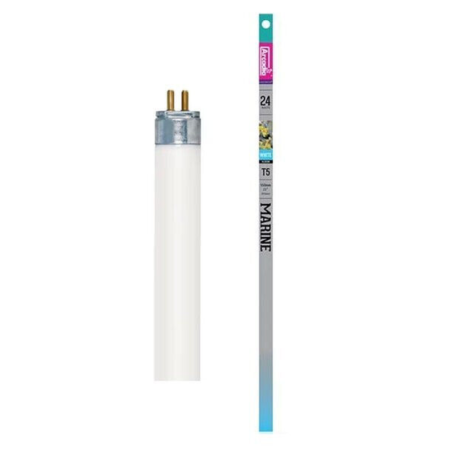
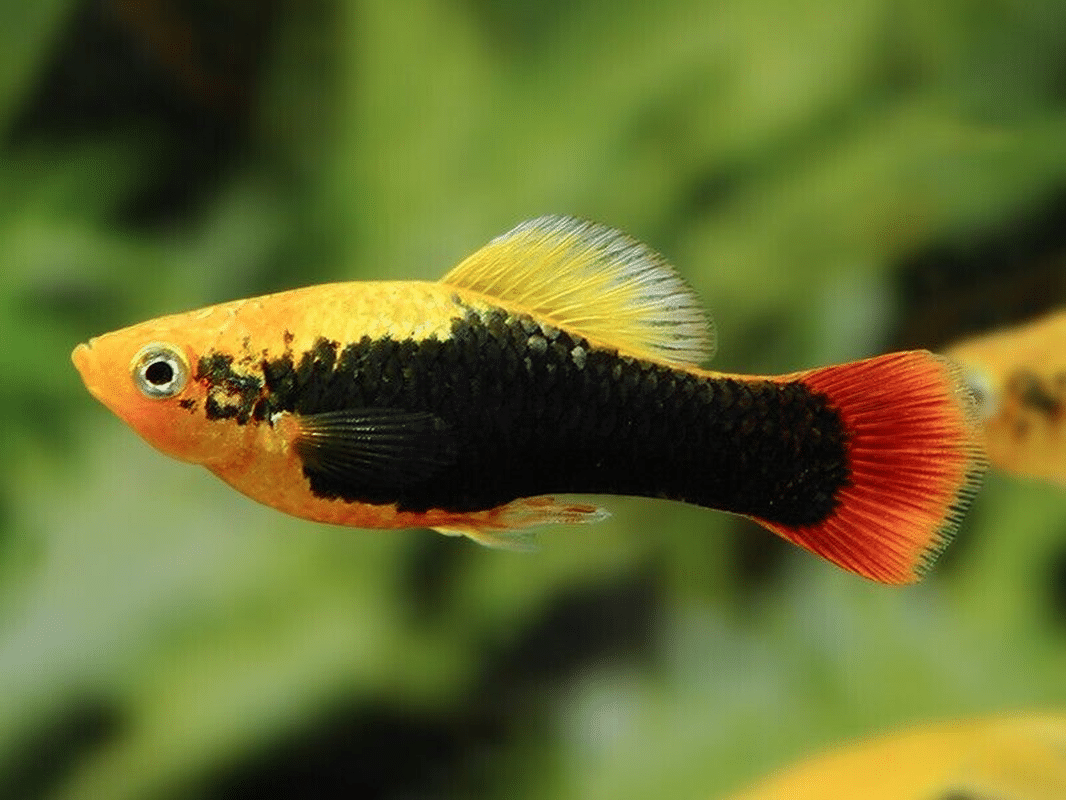
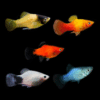

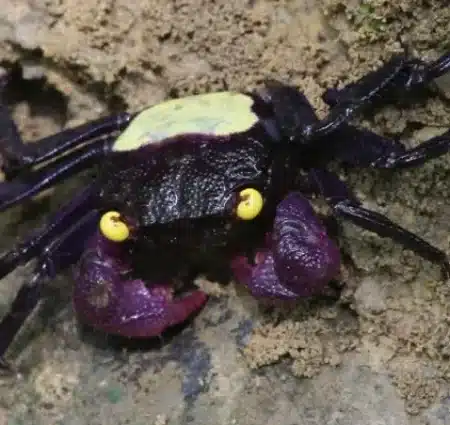



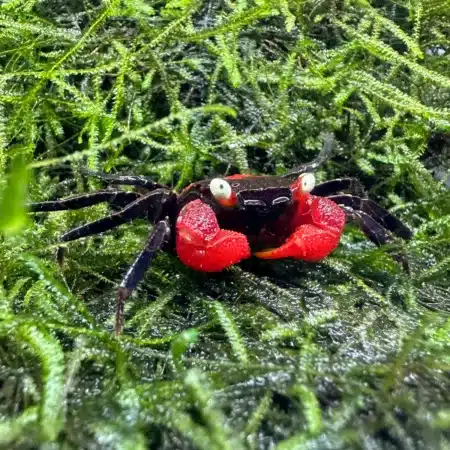
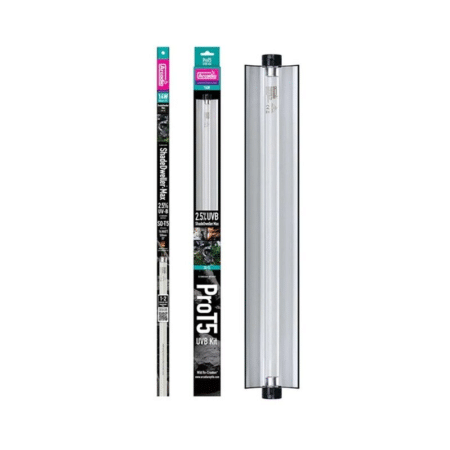


Emily Carter (verified owner) –
I can’t express how thrilled I am with the 5 Hawaii Variegated Platies I purchased! These little beauties arrived just a week ago, and they’ve already become the stars of my aquarium. Their vibrant colors and unique patterns bring a delightful splash of life to my tank.
As a caring fish parent, I prioritize the well-being of my aquatic friends, and I’m happy to report that these platies are active, healthy, and enjoying their new home. They adapt beautifully to a variety of conditions, making them a perfect addition for both beginners and experienced hobbyists alike.
I previously had some standard platies, but the variegated ones are truly on another level. They have such distinct markings and playful personalities that really set them apart. The only minor concern I had was their initial shyness, but within a couple of days, they were swimming confidently around the tank!
If you’re looking for cheerful freshwater fish to brighten up your aquarium, I highly recommend these. They have added so much joy to my setup, and I can’t wait to see how they thrive in the long run!
Emily Carter (verified owner) –
I recently purchased 5 Hawaii Variegated Platies for my 55-gallon freshwater aquarium, and I couldn’t be more thrilled! These platy fish are not just vibrant but also full of personality. They settled in beautifully within a week, and watching them swim around brings me so much joy. The color variations are absolutely stunning – from fiery oranges to gentle yellows.
I’ve kept several species of tropical fish before, but these platies are perfect for both beginners and seasoned aquarists alike. They are hardy and seem to adapt well to my tank conditions, which is really important to me as a caring fish parent. Compared to other livebearers I’ve had, these platies have been a breeze to care for and are much more visually striking.
One minor concern is that they can be a bit nippy with each other during feeding, so I’ve made sure to provide ample hiding spots and plants for them to explore. Overall, I’ve had a great purchase experience with quick shipping and healthy fish arriving as promised. I wholeheartedly recommend these to anyone looking to enhance their aquarium with cheerful tropical fish!